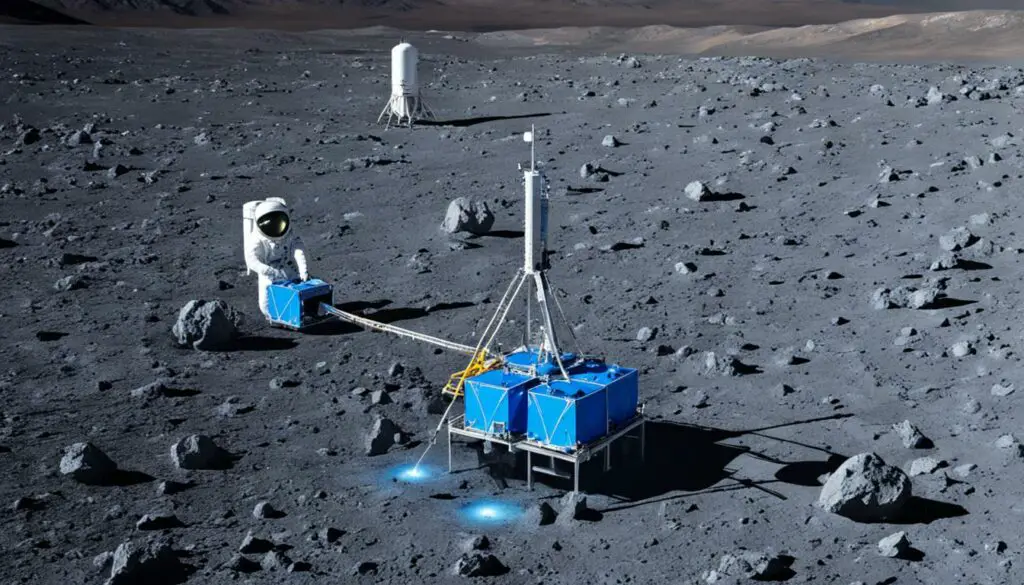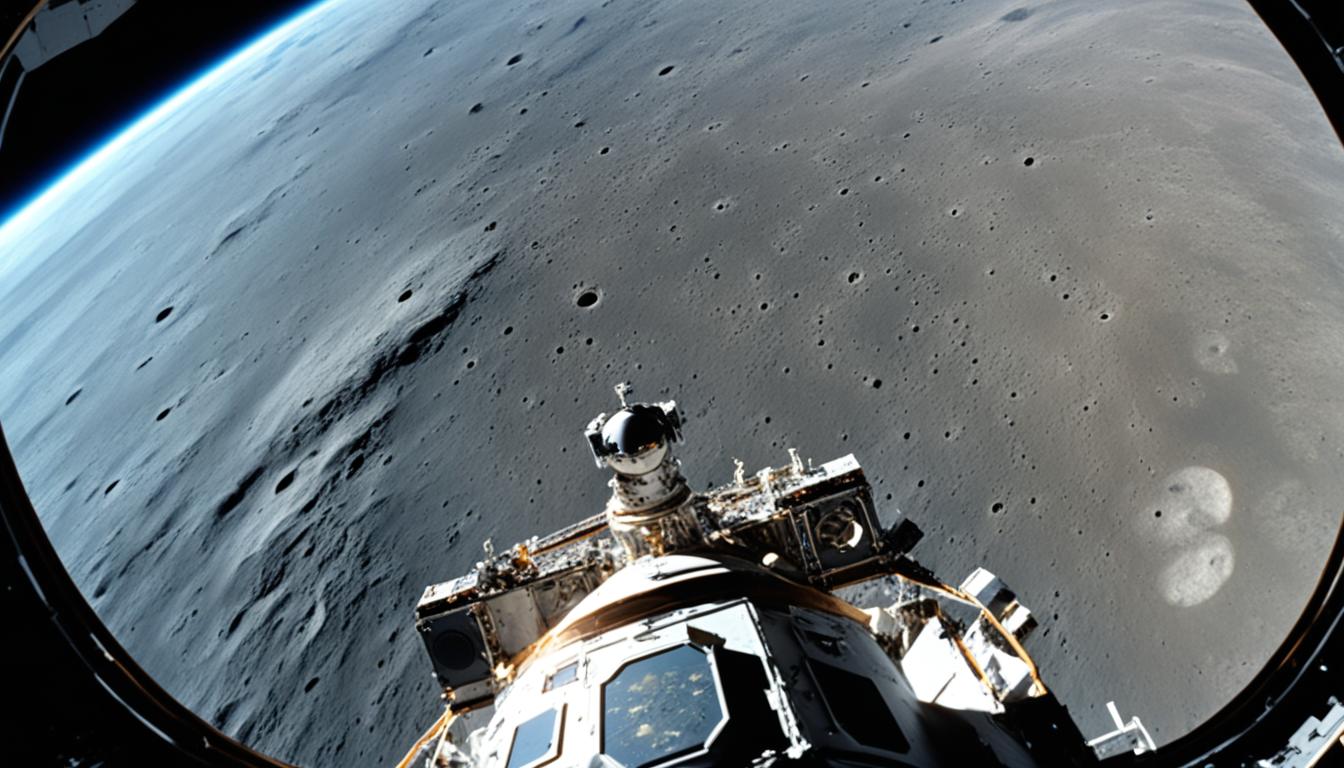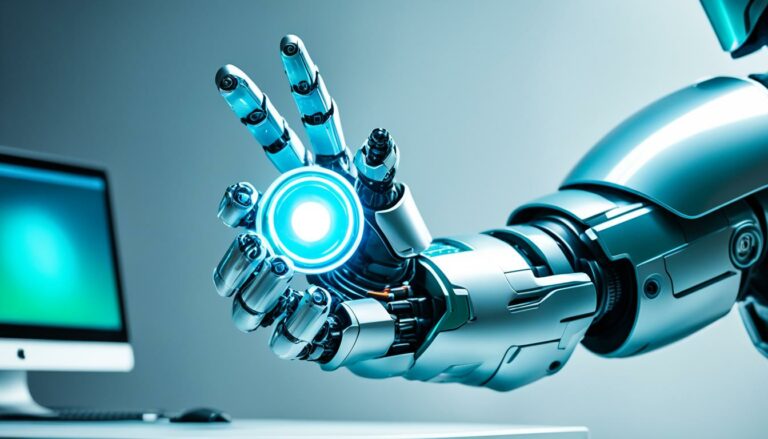Interlune: Blue Origin’s Meyerson Moon Mission
Did you know about Interlune? It is an exciting startup on its way to be the first private company to mine the moon. It’s led by Rob Meyerson and Gary Lai, who used to work at Blue Origin. This company was started by Jeff Bezos. Interlune’s goal is to start extracting resources from the moon.
The company is focusing on helium-3, a special type of helium found a lot on the moon. Helium-3 is really important. It could change industries like fusion energy, quantum computing, and medical imaging.
Interlune got $18 million from investors, including Reddit’s co-founder, Alexis Ohanian. With this money, they plan to set up a pilot plant on the moon by 2028. They want to start working by 2030.
Key Takeaways:
- Interlune aims to be the first private company to mine the moon’s natural resources for commercial use.
- Led by former Blue Origin executives Rob Meyerson and Gary Lai, Interlune is focusing on mining helium-3.
- Helium-3 has significant potential in fusion energy, quantum computing, and medical imaging.
- Interlune plans to establish a pilot plant on the moon by 2028 and begin full-scale operations by 2030.
- With $18 million in funding, including investment from Alexis Ohanian, the company has the resources to pioneer lunar resource extraction.
The Importance of Helium-3 and its Potential Applications
Helium-3 is crucial in developing fusion energy because of its unique properties. It has one less neutron than common helium, meaning it’s perfect for fusion reactions. This leads to less radioactive waste. The development of fusion energy is ongoing, but its ability to create clean energy is significant. It can reduce our use of fossil fuels and help fight global warming.
Helium-3’s potential isn’t just in fusion energy. It also plays a key role in quantum computing. This area of technology could greatly benefit from helium-3, making computers faster and more powerful.
Another use for helium-3 is in medical imaging. It helps doctors see inside the body more clearly. This can lead to better diagnoses and treatments, improving healthcare overall.
Helium-3’s importance stretches beyond its role in fusion energy. Its potential applications in quantum computing and medical imaging highlight the versatility of this valuable resource.
However, helium-3 is rare on Earth, which makes it very valuable. But there’s good news— the moon might have lots of it. If we could mine helium-3 from the moon, it could solve the scarcity problem. This would let us use more of helium-3’s amazing benefits.
| Potential Applications | Description |
|---|---|
| Fusion Energy | Helium-3’s properties make it an ideal fuel for fusion reactions, offering a cleaner and more sustainable energy source. |
| Quantum Computing | Helium-3 can enhance computational capabilities, leading to more advanced quantum computers with superior processing power. |
| Medical Imaging | Helium-3 serves as a detector for nuclear materials, enabling improved accuracy in medical imaging technologies and diagnosis. |

The Future of Helium-3 and Lunar Mining
Lunar mining has great potential for space exploration and gathering resources. Interlune is at the forefront, focusing on mining helium-3 from the moon. They’re developing new ways to get helium-3 and bring it back to Earth.
Interlune is planning a robotic mission to the moon. This will help us understand how much helium-3 is there. Their findings will make mining more efficient.
Interlune’s plans don’t stop there. They aim to start a pilot plant on the moon by 2028. By 2030, they hope to be operating on a larger scale. This could change how we produce energy and pave the way for further scientific discoveries.
The Future of Lunar Mining and Interlune’s Role
Lunar mining could change space exploration and different industries forever. Interlune leads this exciting journey. They focus on mining helium-3, a valuable moon resource. It’s useful for fusion energy, quantum computing, and medical imaging.
Interlune uses special harvesters and techniques to get helium-3 from the moon. They plan to bring this resource to Earth for use. A robotic mission will check how much helium-3 is on the moon. This helps Interlune improve their work.
By 2028, Interlune will have a working plant on the moon. This big step will start full operations by 2030. Interlune wants to change how we get energy, support science, and live in space.
FAQ
What is Interlune?
What is the focus of Interlune’s mining operations?
When does Interlune plan to have a pilot plant on the moon?
How much funding does Interlune have?
What is the significance of helium-3 in fusion energy?
What are the potential applications of helium-3?
Why is helium-3 scarce on Earth?
What is Interlune’s role in lunar mining?
What are Interlune’s plans for establishing a presence on the moon?
How can Interlune revolutionize space exploration and resource extraction?
Source Links
- https://index.hu/techtud/2024/03/28/urkutatas-uzlet-hold-nasa-interlune-vallalkozas-helium-3-nemesgaz-kepalkotas-fuzio-ritka-draga/
- https://b53.bryanrobertssalon.com/web-stories/interlune-comes-out-of-stealth-with-its-plan-to-harvest-helium-3-and-more-on-the-moon/
- https://ca.movies.yahoo.com/moon-mining-startup-interlune-wants-to-start-digging-for-helium-3-by-2030-152216803.html








